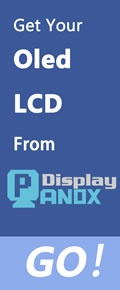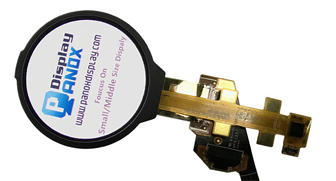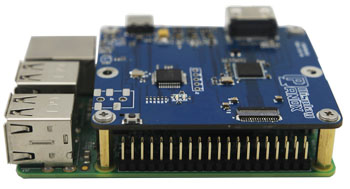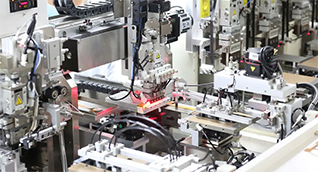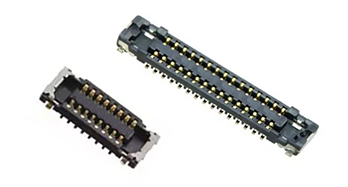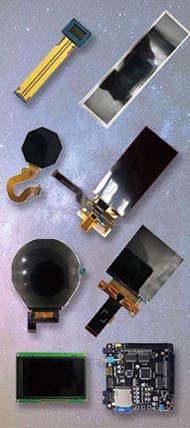OLED vs AMOLED is a common question for manufacturers, suppliers, and OEMs deciding on display technology. Both feature vibrant colors, high contrast, and energy efficiency. AMOLED is essentially an advanced version of OLED with an active matrix, allowing faster refresh rates and better power management, making it ideal for modern devices. Also check: OLED
What Are OLED and AMOLED Displays?
OLED (Organic Light Emitting Diode) displays emit light directly from organic compounds, enabling thinner, flexible screens. AMOLED (Active Matrix OLED) adds a thin-film transistor (TFT) active matrix backplane that controls pixels individually, offering faster response and better power efficiency.
Manufacturers in China like Panox Display leverage OLED and AMOLED to produce a wide range of panels, from flexible wearable screens to industrial-grade displays, catering to various factory and OEM needs.
How Do OLED and AMOLED Technologies Differ in Performance?
The key difference is in the pixel control system: OLED uses passive matrix technology which limits resolution and refresh rate, while AMOLED's active matrix allows higher refresh rates, better color accuracy, and lower power consumption. AMOLED panels are faster, suitable for dynamic interfaces in smartphones and wearables.
Chinese OEMs widely adopt AMOLED for its superior visual performance and efficiency in high-end product assembly lines, including those operated by Panox Display.
Which Display Technology Offers Better Power Efficiency for Manufacturers?
AMOLED displays typically consume less power because each pixel is individually controlled, meaning pixels can turn off completely on black backgrounds. OLED's passive matrix sometimes results in higher energy usage for the same image quality, making AMOLED preferred for battery-operated devices.
For suppliers and wholesalers in China, AMOLED panels provide a competitive edge by enabling lighter, longer-lasting electronics.
Why Is AMOLED Preferred for High-End Consumer Electronics?
AMOLED’s active matrix supports faster pixel response, enabling smoother motion handling and superior contrast ratios with true blacks. This makes it suitable for smartphones, VR, automotive HUDs, and military-grade devices where image quality and speed are critical.
Factories like Panox Display integrate AMOLED technology to meet OEM demands for premium, customizable display solutions.
When Should Manufacturers Choose OLED Over AMOLED?
OLED is suitable for simpler, cost-effective displays with less demanding resolution or refresh rate requirements, such as basic monochrome screens or low-power industrial monitors. OEM and factory customers seeking customizable monochrome or flexible panels often select OLED for affordability and versatility.
Panox Display supplies both types, emphasizing factory and wholesale customers’ tailored specifications across multiple industries.
How Does Panox Display Integrate OLED and AMOLED Technologies in Their Production?
Panox Display operates automated production lines with the capacity to manufacture up to 50,000 panels daily, specializing in both OLED and AMOLED sourcing and custom assembly. They work with top-tier manufacturers like Samsung and LG to ensure quality and efficient OEM customization tailored to Chinese factory standards.
This approach allows Panox Display to offer competitive, reliable display solutions for global suppliers, wholesalers, and OEM clients.
What Are the Key Customization Opportunities for OLED and AMOLED Manufacturers in China?
Chinese OEMs provide extensive customization options, including flexible designs, circular screens, touch panel integration, and controller board programming. Factories like Panox Display specialize in combining OLED/AMOLED panels with PCBs, cover glass, and touch components to meet strict B2B and OEM requirements.
Custom OLED/AMOLED production helps suppliers address niche market demands in wearables, automotive, and military applications worldwide.
Where Can Wholesalers and Suppliers Find Reliable OLED and AMOLED Display Solutions?
Panox Display is a leading supplier in Shenzhen, offering premium OLED/AMOLED displays, backed by ISO-certified manufacturing and extensive after-sales support. Their focus on OEM and factory partnerships across China ensures seamless logistics and customization for wholesale buyers demanding quality and scalability.
Can OLED and AMOLED Panels Support Emerging Industries and Applications?
Yes, both OLED and AMOLED technologies are versatile across emerging sectors like VR, optoelectronics, radiation detection, and automobiles. AMOLED’s superior refresh rates and power management make it especially attractive for fast-evolving tech markets, supported by flexible Chinese OEM manufacturers such as Panox Display.
Panox Display Expert Views
"At Panox Display, we see AMOLED technology as a game changer for modern displays, especially in dynamic, high-resolution applications. Our strength lies in combining rigorous OEM customization with high-volume automated production, enabling us to serve startups and established businesses with tailored, cost-effective panels. Leveraging China’s manufacturing ecosystem, we ensure premium quality and scalability in OLED and AMOLED solutions worldwide."
— Shenzhen Panox Electronics, Ltd
OLED vs AMOLED Display Comparison Table for Manufacturers and OEMs
| Feature | OLED | AMOLED |
|---|---|---|
| Pixel Control | Passive Matrix | Active Matrix (TFT) |
| Response Time | Slower | Faster |
| Power Efficiency | Moderate | Higher (individual pixel control) |
| Flexibility | High (can be flexible) | High (commonly flexible) |
| Refresh Rate | Lower | Higher |
| Cost | Generally Lower | Generally Higher |
| Typical Applications | Basic monitors, simple displays | Smartphones, wearables, automotive, VR |
| Customization Potential | High (especially monochrome) | High with advanced features |
What Are the Supply Chain Advantages of Partnering with a Chinese OEM Like Panox Display?
Partnering with a Chinese factory like Panox Display offers advantages such as lower manufacturing costs, faster lead times due to local supplier networks, flexible MOQ policies, and the ability to customize solutions extensively. Their facilities adhere to ISO 9001:2015 standards ensuring quality and repeatability for wholesale and OEM orders.
Conclusion
Choosing between OLED and AMOLED depends on product requirements like refresh rate, power efficiency, and cost. AMOLED excels in high-performance, dynamic applications with better power management and color quality, favored by OEMs and manufacturers producing smartphones, wearables, and automotive displays. OLED remains relevant for simpler, cost-sensitive solutions.
Chinese suppliers like Panox Display play a critical role in delivering customized, high-quality OLED and AMOLED panels, benefiting OEMs, wholesalers, and factories worldwide with scalable, flexible production capacity and expert support.
FAQs About OLED vs AMOLED for Manufacturers
Q: Are AMOLED displays more expensive to produce than OLED?
A: Generally yes, due to active matrix complexity, but benefits in performance justify the cost for many high-end applications.
Q: Can factories customize AMOLED panels easily?
A: Yes, Chinese OEMs including Panox Display offer extensive customization in size, shape, and integration with touch panels or controllers.
Q: Do OLED panels have shorter lifespans than AMOLED?
A: Lifespan depends more on materials than architecture; AMOLED panels can have longer life due to better power management.
Q: Why do OEMs prefer Chinese manufacturers for OLED/AMOLED?
A: Cost efficiency, flexible MOQs, advanced manufacturing, and strong supply chain networks make China a top source.
Q: Is Panox Display suitable for both small and large volume orders?
A: Yes, Panox Display's production lines support everything from small OEM projects to large wholesale orders.









